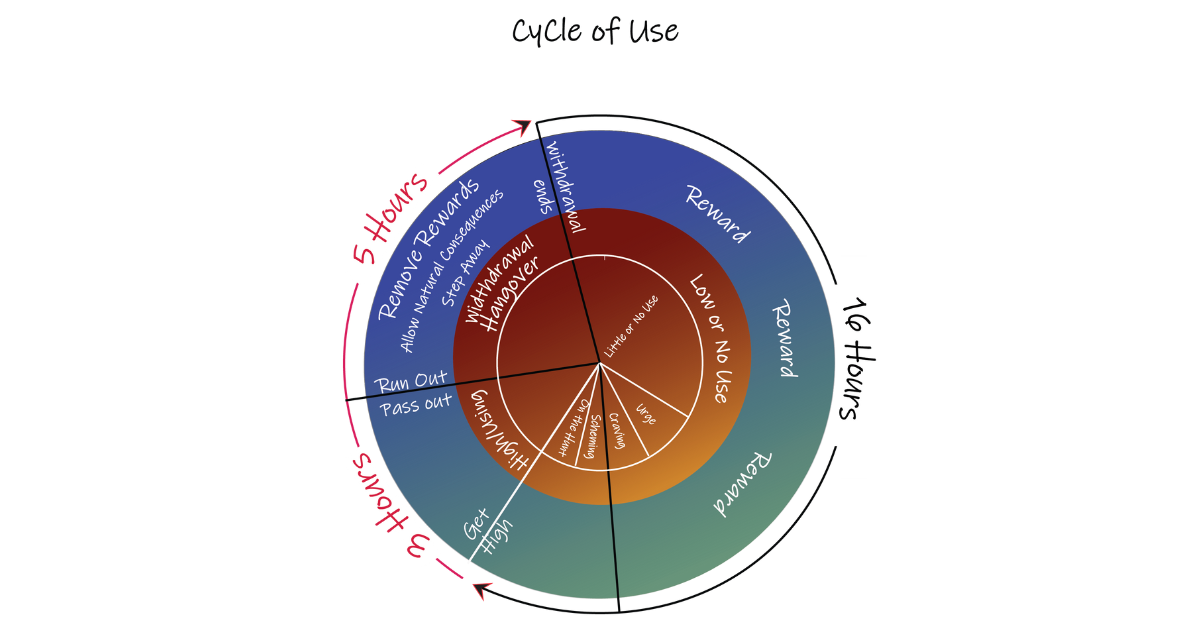CRAFT is founded on strong connections with our Loved Ones—indeed, it shows us many ways to strengthen those connections. But it also teaches us to absent ourselves, to step away and allow for consequences, when our Loved Ones are using. How do we reconcile this apparent contradiction? That’s at the heart of 14619’s question as they face a teenage son who uses pot on a daily basis. Allies’ CEO Dominique Simon-Levine walks us through the key considerations when assessing a Loved One’s use and our response to it. The truth is, there’s no contradiction—as long as our responses are informed and precise.
Good day!! We were hoping to get some help with our situation. Our son has been using marijuana (we are quite certain nothing else) periodically for 2 1/2 years now. Lately, it’s become a daily habit. What we are struggling with is the approach we should be taking.
Module 6 explains that when they are using: no rewards, step away, and allow for natural consequences. Should this be what we are doing each and every day while he is using daily? Our concern is that any connection/bridge we have with him will disappear (which, as noted in the modules, is something really important to have). If someone could please help with this, we would really appreciate it. Thank you!
This is an important question, 14619. Indeed, it’s essential to preserve the relationship you’ve been cultivating with your son, and to keep doing everything in your power to build on that bond with him. It is through this connection that you influence change in your son. CRAFT teaches you how to build that bond.
The short answer is yes
To get right down to it: yes, you would lean in with rewards when he’s not using. Yes, you would step away when he is using, by removing those rewards and allowing for consequences—daily, perhaps hourly—as you assess your son’s degree of impairment. And remember that the most basic reward is yourself: your engagement with him, your presence.
Start with the questions in Module 3. They should help you assess your son’s degree of impairment and, crucially, your reaction to it. Your answers to those questions are then graphed so that the pattern of a typical use episode emerges more clearly. As things change, you add new observations and delete what you no longer see happening. You keep your file up to date. The picture that emerges is therefore always a snapshot of the present moment. This focus on the situation right now is central to CRAFT.
So when you see or hear from your Loved One (LO), the first question to ask yourself is whether they are a) high or b) low/not high. Once you’ve completed Module 3, you’ll have become aware of the pattern and will be better able to choose between a) and b).
The question of certainty
Is he using or not? While you may still feel less than 100% certain at times, you need to make that determination, which will inform your tone and communication with your son. You determine that he’s not high, and you lean in with rewards. Or you determine that he is, and you remove yourself and other rewards and let the natural consequences of his use occur.
When applying this aspect of CRAFT, it’s important to avoid coming across as mixed. Doing so will not only make your signals less clear to your Loved One, but will also reduce your own sense of clarity and targeted effort. CRAFT changes are very small and incremental. You’ll have made your best, informed effort to assess the present moment correctly. You don’t need to worry if you occasionally get it wrong. Little is lost if you act neutral and disconnected because you thought he was high and wasn’t. For instance, you assume he’s high because he’s late—so dinner is cold, in the fridge, and you’ve gone to bed. Not an earthshattering mistake.
A model scenario
So let’s work through a scenario with parents and an older teen who smokes cannabis daily. Module 3 asks us to become aware of “a using episode,” so for this exercise I’ll imagine some of the parents’ answers:
Length of use: the smoking high lasts about 3 hours, followed by a slightly flat affect (for another 3-5 hours). After that, some anxiousness, grumpiness, and the start of fidgeting.
Frequency of use (Monday to Friday): one to three times a day, before and/or after work or school, and in the evening if he goes out after dinner.
Other observations: Loved One doesn’t smoke when home. How long he’s home partially depends on whether there is an activity that distracts him. Activities such as chores or cooking can keep him home longer and therefore delay use. During the week this delay can be enough to make him choose to go to bed and not use after dinner.
The pattern (again, Monday to Friday):
- Son uses before school or work, once out of the house.
- 9AM to 4PM not using.
- Gets high a second time right after school/work, comes home late, typically around 6 (in time for dinner), or even later, OR
- Doesn’t get high and comes home closer to 5PM, after exercising or some planned engagement.
- Occasionally, finds an excuse to go out after dinner (he definitely uses a 3rd time here)
- Pattern repeats each day
The question is this: where in this daily-cannabis-use scenario is there low or no use—and thus, a time for rewards?
Finding that open window
Here’s your guide: first, choose the use episode in which you have the most information and/or the most contact. This would not be the morning when you’re all busy your day started. It would not be when he’s at work or school, even though there are missed opportunities to reward if he’s not high all day. Mostly likely it would be when he comes home—especially on days when he’s on time and the signs are pointing to him not being high. On those occasion, you reward, and continue to do so through the evening if he doesn’t go back out.
If he comes home late, and shows other signs of use, all rewards would be removed for the evening, since the use continues to affect him for up to five hours. You’ll still have the morning, prior to work, to be rewarding. But for the rest of that evening you’d be neutral, scarce, and not rewarding.
From your past observations, you know that if he goes out after dinner, it’s almost certain that he’s using. There would be no rewarding when he does come home or in those early morning hours the next day.
This is a lot to keep in mind, I know. If nothing else, remember this: it’s up to you to determine, as best you can, where to draw the line between use and low/no use. Once you do, act accordingly. And if the situation changes in the course of the day, so do you.
Thanks for posing this important question. I’m sure many in our community have faced the same sort of dilemma, and I hope my response here brings some clarity. Wishing you and your son the very best in your journey together.



